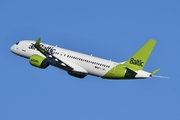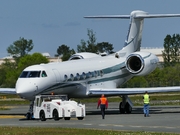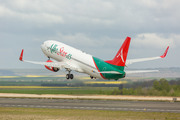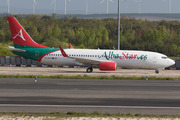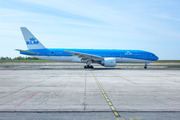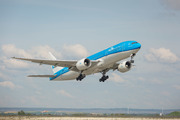Dépêches
PBN Will Create Significant Environmental and Economic Benefits: Implementation of new aircraft paths will require unprecedented collaboration
Dépèche transmise le 1 octobre 2011 par Business Wire
SEATTLE--(BUSINESS WIRE)--Performance-based Navigation technology will produce major environmental and economic improvements if communities, airlines, airports and air navigation service providers collaborate to implement them. That was the consensus of international aviation Industry leaders who gathered in Seattle this week for the fifth annual Global PBN Summit.
“Giving the local community ownership in the initiative is critical.”
PBN unleashes the full potential of current-generation aircraft to fly precisely-defined paths without relying on ground-based radio navigation signals. Required Navigation Performance (RNP), an enhanced mode of PBN, guarantees the aircraft does not stray from the path and enables additional navigational flexibility, such as the ability to follow curved paths.
GE Aviation Technical Fellow Steve Fulton opened the Summit by stressing the importance of collaboration among aviation leaders and stakeholders to eliminate barriers for RNP implementation. His remarks set the tone for the two-day event, which was attended by more than 200 global leaders from the airline industry, airport officials, aviation regulatory officials and air navigation services providers. Discussion over the two days focused on requirements for creating near term reductions of CO2 and noise and reductions in aviation fuel consumption through the deployment of Performance-based Navigation.
U.S. Representative Adam Smith for Washington’s 9th district urged participants to engage communities around airports and suggested that PBN technologies provide great flexibility for strategies to address community concerns.
“PBN is an eventual reality and will be coming to every airport in the U.S.,” said Chad Leqve, Manager of Noise, Environment and Planning for Metropolitan Airports Commission in Minneapolis, MN. It is necessary to engage the local citizenry and elected officials in the process from the beginning, and that includes the procedure design and in developing strategies for environmental review, he said. “That’s probably the single biggest factor contributing to our success,” said Leqve. “Giving the local community ownership in the initiative is critical.”
“Community engagement is a key part of the environmental review process,” said Lourdes Maurice, Executive Director for Environment and Energy at the Federal Aviation Administration (FAA). “With NextGen, we’ve taken a very strategic approach to achieving our goals,” Maurice said. “This includes achieving carbon neutral growth within the next 10 years.” It’s by explaining the local benefit and impact of new procedures that we can overcome existing challenges.
While there was debate over the optimal path forward, the potential benefits of implementing PBN across the globe were clear.
Captain David Newton, Senior Manager of NextGen/Airspace at Southwest Airlines, illustrated for participants how Southwest has already realized fuel savings from implementing RNP approaches at 16 airports around the country, for a total of 5800 RNP approaches in 2011. Newton noted that recent successes in other places such as Brisbane were a testament to what can be done. “There’s no reason why it can’t happen right here in the U.S.,” said Newton.
Greg Russell, CEO of Airservices Australia, said that the greatest advantage of PBN is the ability to fly very precise paths, which offers tremendous benefits from decreased fuel burn to reduction in emissions. “It’s clearly the way of the future,” said Russell.
Reducing barriers for upgrading our infrastructure was a main call to action that was highlighted throughout the discussion.
Alex de Gunten, Executive Director at ALTA (Latin American and Caribbean Air Transport Association), said we are limited from a capacity perspective by our infrastructure, and that new technologies such as PBN will alleviate future congestion. “We should be able to take full advantage of the technology available on our aircraft,” said de Gunten, emphasizing the need to unlock the funds and political will to realize that goal.
Also discussed was the role of air traffic controllers in effectively reconciling changing technology and demands on the airspace. Melvin Davis, National NextGen Representative for NATCA: “For the ATC perspective, reconciling the differences between legacy and future systems has been the job of a controller all along. It’s not an easy thing to do, but there’s recognition that it’s absolutely necessary.”
- 24/04Ibis Styles London Heathrow : l'hôtel géré par un passionné d'aviation pour les passionnés d'aviation (photos + vidéos)
- 23/04 SkyUp renouvelle son partenariat avec Wizz Air
- 23/04 Play : résultats de mars 2024
- 23/04 Les garde-côtes japonais commande trois Airbus H225 supplémentaires
- 23/04 Vueling et Make-A-Wish France signent un partenariat
- 23/04 TUI annonce ses destinations au départ de Deauville pour l'été 2024.
- 23/04 Twin Jet renforce son programme de vols sur la ligne Toulouse/Rennes
- 23/04 Norse Atlantic Airways : résultats du mois de mars 2024
- 23/04 Volotea renforce son offre entre Lille et le Maroc
- 22/04 Finnair a dévoilé son programme de vol pour les saisons hiver 2024 et été 2025
- 22/04 Qatar Airways annonce le lancement de vols à destination de Kinshasa
- 22/04 Vietnam Airlines et CAE prolongent leur accord
- 22/04 Mermoz Academy de Tours commande des Tecnam P-Mentor
- 22/04 Transavia France reçoit son 2e Airbus A320neo
- 20/04 Friedrichshafen 2024 : Blackwing présente un nouveau modèle de son BW650RG
- 20/04 Friedrichshafen 2024 : JMB Aircraft présente son Phoenix
- 19/04 Friedrichshafen 2024 : le projet "Fly To The North"
- 19/04 Friedrichshafen 2024 : Aura Aero présente pour la première fois ses trois appareils
- 19/04 Friedrichshafen 2024 : Duc Hélices présente son hélice Tiger-3
- 19/04 Friedrichshafen 2024 : Splash-in Aviation expose son Pétrel X


